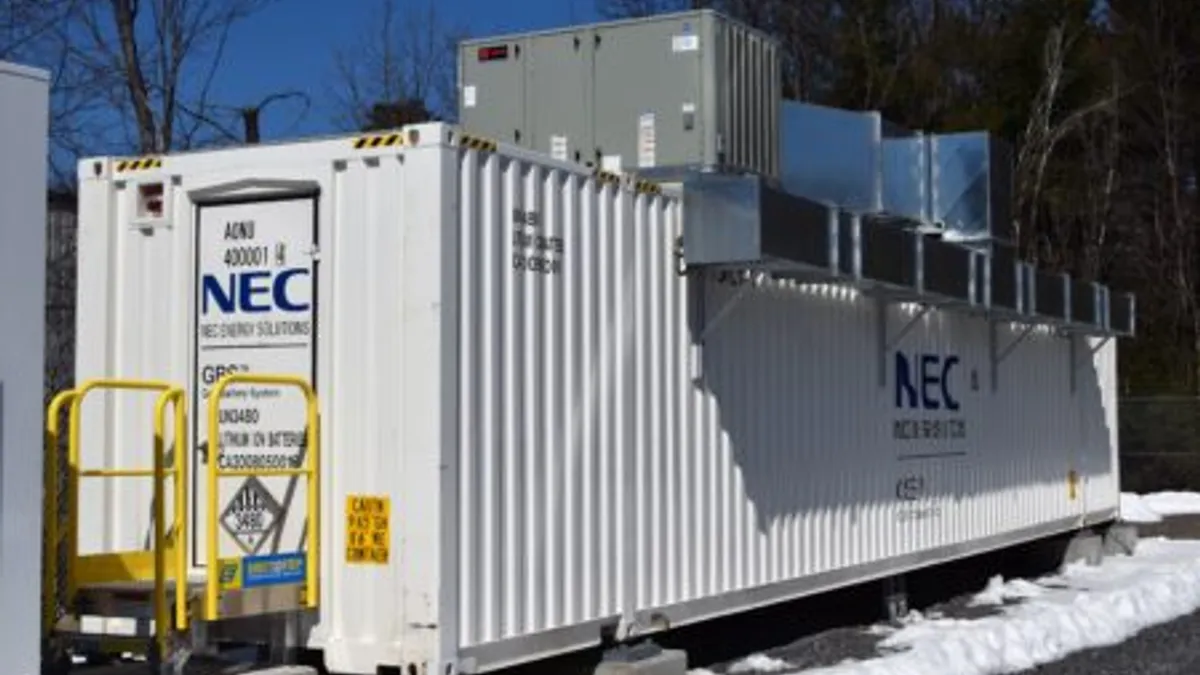Dive Brief:
-
After a week of negotiations, stakeholders in Massachusetts have reached a compromise that allows the owners of solar and storage facilities in the state to retain ownership of capacity rights.
-
The compromise allows owners of residential solar and storage facilities to retain the right to bid the capacity from their facilities into ISO New England’s forward capacity market.
-
Owners of larger facilities retain the capacity rights for storage facilities and would have the right to buy out from utilities the capacity rights for net metered facilities such as solar power plants that include storage capability or add storage capability.
Dive Insight:
The compromise in Massachusetts, should it be approved by the state’s Department of Public Utilities, would open the door for development of an energy storage market in Massachusetts by expanding the potential revenue streams available to owners of energy storage projects.
Last summer, Massachusetts set a 200 MWh by 2020 energy storage target. But aside from demonstration projects, there was little activity for commercial energy storage projects.
The state’s Solar Massachusetts Renewable Target (SMART) program is seen as the major vehicle for developing an energy storage market in the state, but it became embroiled in a debate about ownership of capacity rights that had its roots in the state’s net metering program.
The tension at the heart of the conflict was trying to reach agreement between providing incentives for developers of energy storage projects and allowing utilities access to capacity rights as a way to offset the costs of the net metering on ratepayers.
The compromise proposal allows the state’s utilities to retain the capacity rights for Class II and Class III net metered and SMART facilities, but also includes an option for developers of those projects to buy out the capacity rights from the utility. There is no buy-out option for standalone, non-residential solar projects not paired with storage.
Utilities would have two options when it comes to retaining the capacity rights. The first option would allow the utility to retain 20% of capacity revenues. In the second option, all capacity revenues would flow to ratepayers. The advantage of the first option is that it would flow more potential revenues to the utility. The advantage of the second option is it would potentially offset a higher level of net metering payments.
The proposed compromise was reached among the state’s utilities, clean energy companies, the Massachusetts ratepayer advocate and the state’s Department of Energy Resources (DOER).














